Yifei Li
Lyapunov Function-guided Reinforcement Learning for Flight Control
Oct 26, 2025Abstract:A cascaded online learning flight control system has been developed and enhanced with respect to action smoothness. In this paper, we investigate the convergence performance of the control system, characterized by the increment of a Lyapunov function candidate. The derivation of this metric accounts for discretization errors and state prediction errors introduced by the incremental model. Comparative results are presented through flight control simulations.
Mind2Web 2: Evaluating Agentic Search with Agent-as-a-Judge
Jun 26, 2025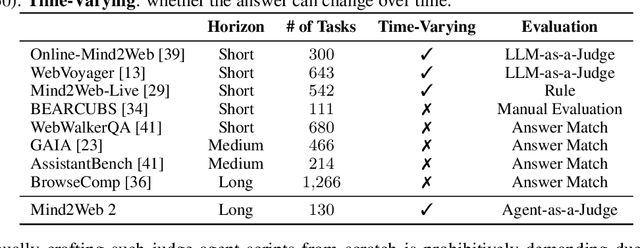

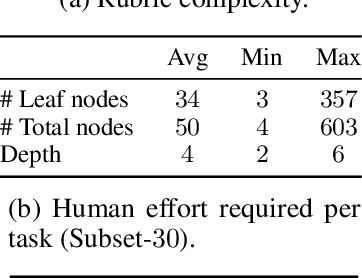
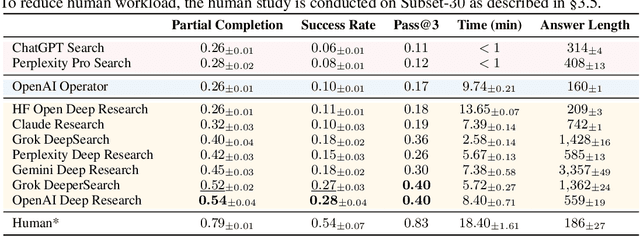
Abstract:Agentic search such as Deep Research systems, where large language models autonomously browse the web, synthesize information, and return comprehensive citation-backed answers, represents a major shift in how users interact with web-scale information. While promising greater efficiency and cognitive offloading, the growing complexity and open-endedness of agentic search have outpaced existing evaluation benchmarks and methodologies, which largely assume short search horizons and static answers. In this paper, we introduce Mind2Web 2, a benchmark of 130 realistic, high-quality, and long-horizon tasks that require real-time web browsing and extensive information synthesis, constructed with over 1,000 hours of human labor. To address the challenge of evaluating time-varying and complex answers, we propose a novel Agent-as-a-Judge framework. Our method constructs task-specific judge agents based on a tree-structured rubric design to automatically assess both answer correctness and source attribution. We conduct a comprehensive evaluation of nine frontier agentic search systems and human performance, along with a detailed error analysis to draw insights for future development. The best-performing system, OpenAI Deep Research, can already achieve 50-70% of human performance while spending half the time, showing a great potential. Altogether, Mind2Web 2 provides a rigorous foundation for developing and benchmarking the next generation of agentic search systems.
AutoSDT: Scaling Data-Driven Discovery Tasks Toward Open Co-Scientists
Jun 09, 2025Abstract:Despite long-standing efforts in accelerating scientific discovery with AI, building AI co-scientists remains challenging due to limited high-quality data for training and evaluation. To tackle this data scarcity issue, we present AutoSDT, an automatic pipeline that collects high-quality coding tasks in real-world data-driven discovery workflows. AutoSDT leverages the coding capabilities and parametric knowledge of LLMs to search for diverse sources, select ecologically valid tasks, and synthesize accurate task instructions and code solutions. Using our pipeline, we construct AutoSDT-5K, a dataset of 5,404 coding tasks for data-driven discovery that covers four scientific disciplines and 756 unique Python packages. To the best of our knowledge, AutoSDT-5K is the only automatically collected and the largest open dataset for data-driven scientific discovery. Expert feedback on a subset of 256 tasks shows the effectiveness of AutoSDT: 93% of the collected tasks are ecologically valid, and 92.2% of the synthesized programs are functionally correct. Trained on AutoSDT-5K, the Qwen2.5-Coder-Instruct LLM series, dubbed AutoSDT-Coder, show substantial improvement on two challenging data-driven discovery benchmarks, ScienceAgentBench and DiscoveryBench. Most notably, AutoSDT-Coder-32B reaches the same level of performance as GPT-4o on ScienceAgentBench with a success rate of 7.8%, doubling the performance of its base model. On DiscoveryBench, it lifts the hypothesis matching score to 8.1, bringing a 17.4% relative improvement and closing the gap between open-weight models and GPT-4o.
Automating Exploratory Multiomics Research via Language Models
Jun 09, 2025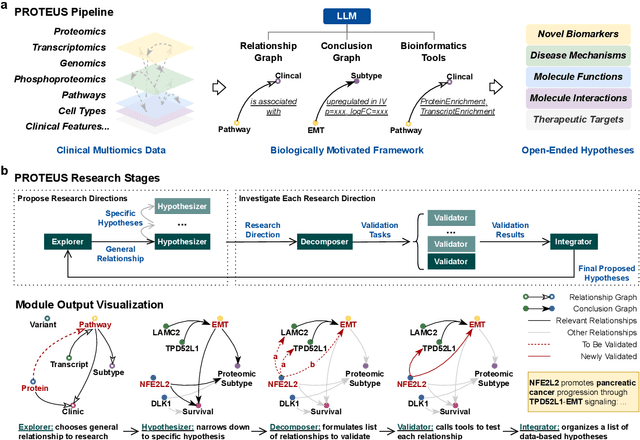
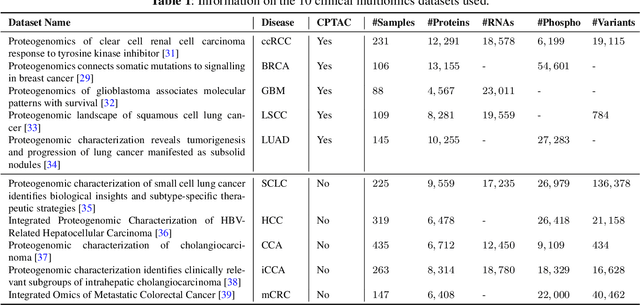
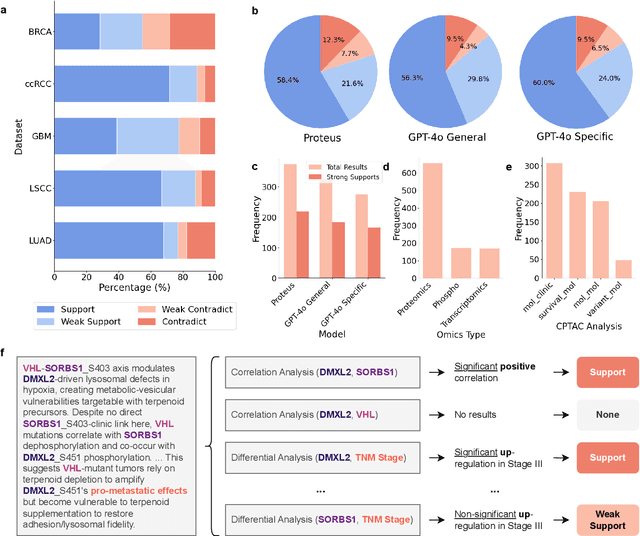

Abstract:This paper introduces PROTEUS, a fully automated system that produces data-driven hypotheses from raw data files. We apply PROTEUS to clinical proteogenomics, a field where effective downstream data analysis and hypothesis proposal is crucial for producing novel discoveries. PROTEUS uses separate modules to simulate different stages of the scientific process, from open-ended data exploration to specific statistical analysis and hypothesis proposal. It formulates research directions, tools, and results in terms of relationships between biological entities, using unified graph structures to manage complex research processes. We applied PROTEUS to 10 clinical multiomics datasets from published research, arriving at 360 total hypotheses. Results were evaluated through external data validation and automatic open-ended scoring. Through exploratory and iterative research, the system can navigate high-throughput and heterogeneous multiomics data to arrive at hypotheses that balance reliability and novelty. In addition to accelerating multiomic analysis, PROTEUS represents a path towards tailoring general autonomous systems to specialized scientific domains to achieve open-ended hypothesis generation from data.
ChartSketcher: Reasoning with Multimodal Feedback and Reflection for Chart Understanding
May 25, 2025Abstract:Charts are high-density visualization carriers for complex data, serving as a crucial medium for information extraction and analysis. Automated chart understanding poses significant challenges to existing multimodal large language models (MLLMs) due to the need for precise and complex visual reasoning. Current step-by-step reasoning models primarily focus on text-based logical reasoning for chart understanding. However, they struggle to refine or correct their reasoning when errors stem from flawed visual understanding, as they lack the ability to leverage multimodal interaction for deeper comprehension. Inspired by human cognitive behavior, we propose ChartSketcher, a multimodal feedback-driven step-by-step reasoning method designed to address these limitations. ChartSketcher is a chart understanding model that employs Sketch-CoT, enabling MLLMs to annotate intermediate reasoning steps directly onto charts using a programmatic sketching library, iteratively feeding these visual annotations back into the reasoning process. This mechanism enables the model to visually ground its reasoning and refine its understanding over multiple steps. We employ a two-stage training strategy: a cold start phase to learn sketch-based reasoning patterns, followed by off-policy reinforcement learning to enhance reflection and generalization. Experiments demonstrate that ChartSketcher achieves promising performance on chart understanding benchmarks and general vision tasks, providing an interactive and interpretable approach to chart comprehension.
Enhancing Large Language Models with Reward-guided Tree Search for Knowledge Graph Question and Answering
May 18, 2025Abstract:Recently, large language models (LLMs) have demonstrated impressive performance in Knowledge Graph Question Answering (KGQA) tasks, which aim to find answers based on knowledge graphs (KGs) for natural language questions. Existing LLMs-based KGQA methods typically follow the Graph Retrieval-Augmented Generation (GraphRAG) paradigm, which first retrieves reasoning paths from the large KGs, and then generates the answers based on them. However, these methods emphasize the exploration of new optimal reasoning paths in KGs while ignoring the exploitation of historical reasoning paths, which may lead to sub-optimal reasoning paths. Additionally, the complex semantics contained in questions may lead to the retrieval of inaccurate reasoning paths. To address these issues, this paper proposes a novel and training-free framework for KGQA tasks called Reward-guided Tree Search on Graph (RTSoG). RTSoG decomposes an original question into a series of simpler and well-defined sub-questions to handle the complex semantics. Then, a Self-Critic Monte Carlo Tree Search (SC-MCTS) guided by a reward model is introduced to iteratively retrieve weighted reasoning paths as contextual knowledge. Finally, it stacks the weighted reasoning paths according to their weights to generate the final answers. Extensive experiments on four datasets demonstrate the effectiveness of RTSoG. Notably, it achieves 8.7\% and 7.0\% performance improvement over the state-of-the-art method on the GrailQA and the WebQSP respectively.
Wan: Open and Advanced Large-Scale Video Generative Models
Mar 26, 2025Abstract:This report presents Wan, a comprehensive and open suite of video foundation models designed to push the boundaries of video generation. Built upon the mainstream diffusion transformer paradigm, Wan achieves significant advancements in generative capabilities through a series of innovations, including our novel VAE, scalable pre-training strategies, large-scale data curation, and automated evaluation metrics. These contributions collectively enhance the model's performance and versatility. Specifically, Wan is characterized by four key features: Leading Performance: The 14B model of Wan, trained on a vast dataset comprising billions of images and videos, demonstrates the scaling laws of video generation with respect to both data and model size. It consistently outperforms the existing open-source models as well as state-of-the-art commercial solutions across multiple internal and external benchmarks, demonstrating a clear and significant performance superiority. Comprehensiveness: Wan offers two capable models, i.e., 1.3B and 14B parameters, for efficiency and effectiveness respectively. It also covers multiple downstream applications, including image-to-video, instruction-guided video editing, and personal video generation, encompassing up to eight tasks. Consumer-Grade Efficiency: The 1.3B model demonstrates exceptional resource efficiency, requiring only 8.19 GB VRAM, making it compatible with a wide range of consumer-grade GPUs. Openness: We open-source the entire series of Wan, including source code and all models, with the goal of fostering the growth of the video generation community. This openness seeks to significantly expand the creative possibilities of video production in the industry and provide academia with high-quality video foundation models. All the code and models are available at https://github.com/Wan-Video/Wan2.1.
LocalEscaper: A Weakly-supervised Framework with Regional Reconstruction for Scalable Neural TSP Solvers
Feb 18, 2025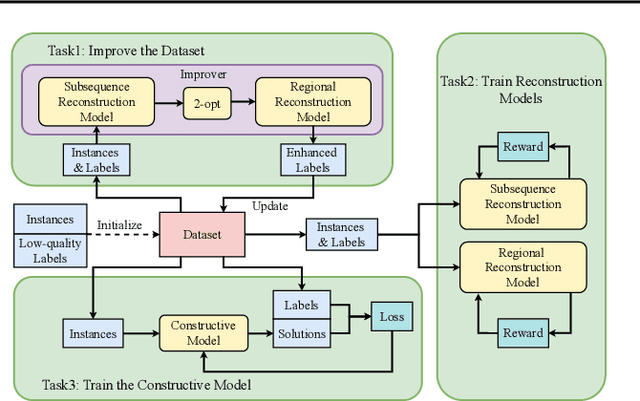
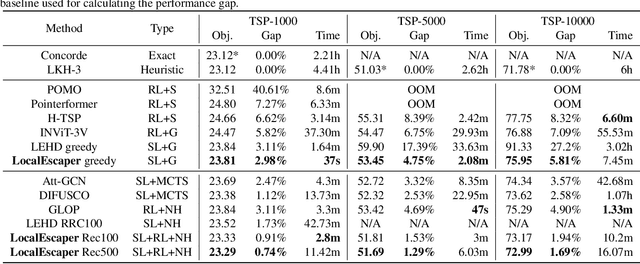
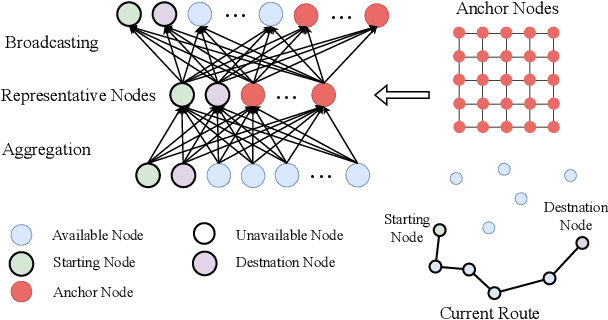

Abstract:Neural solvers have shown significant potential in solving the Traveling Salesman Problem (TSP), yet current approaches face significant challenges. Supervised learning (SL)-based solvers require large amounts of high-quality labeled data, while reinforcement learning (RL)-based solvers, though less dependent on such data, often suffer from inefficiencies. To address these limitations, we propose LocalEscaper, a novel weakly-supervised learning framework for large-scale TSP. LocalEscaper effectively combines the advantages of both SL and RL, enabling effective training on datasets with low-quality labels. To further enhance solution quality, we introduce a regional reconstruction strategy, which mitigates the problem of local optima, a common issue in existing local reconstruction methods. Additionally, we propose a linear-complexity attention mechanism that reduces computational overhead, enabling the efficient solution of large-scale TSPs without sacrificing performance. Experimental results on both synthetic and real-world datasets demonstrate that LocalEscaper outperforms existing neural solvers, achieving state-of-the-art results. Notably, it sets a new benchmark for scalability and efficiency, solving TSP instances with up to 50,000 cities.
MedXpertQA: Benchmarking Expert-Level Medical Reasoning and Understanding
Jan 30, 2025Abstract:We introduce MedXpertQA, a highly challenging and comprehensive benchmark to evaluate expert-level medical knowledge and advanced reasoning. MedXpertQA includes 4,460 questions spanning 17 specialties and 11 body systems. It includes two subsets, Text for text evaluation and MM for multimodal evaluation. Notably, MM introduces expert-level exam questions with diverse images and rich clinical information, including patient records and examination results, setting it apart from traditional medical multimodal benchmarks with simple QA pairs generated from image captions. MedXpertQA applies rigorous filtering and augmentation to address the insufficient difficulty of existing benchmarks like MedQA, and incorporates specialty board questions to improve clinical relevance and comprehensiveness. We perform data synthesis to mitigate data leakage risk and conduct multiple rounds of expert reviews to ensure accuracy and reliability. We evaluate 16 leading models on MedXpertQA. Moreover, medicine is deeply connected to real-world decision-making, providing a rich and representative setting for assessing reasoning abilities beyond mathematics and code. To this end, we develop a reasoning-oriented subset to facilitate the assessment of o1-like models.
Static Batching of Irregular Workloads on GPUs: Framework and Application to Efficient MoE Model Inference
Jan 27, 2025
Abstract:It has long been a problem to arrange and execute irregular workloads on massively parallel devices. We propose a general framework for statically batching irregular workloads into a single kernel with a runtime task mapping mechanism on GPUs. We further apply this framework to Mixture-of-Experts (MoE) model inference and implement an optimized and efficient CUDA kernel. Our MoE kernel achieves up to 91% of the peak Tensor Core throughput on NVIDIA H800 GPU and 95% on NVIDIA H20 GPU.
 Add to Chrome
Add to Chrome Add to Firefox
Add to Firefox Add to Edge
Add to Edge